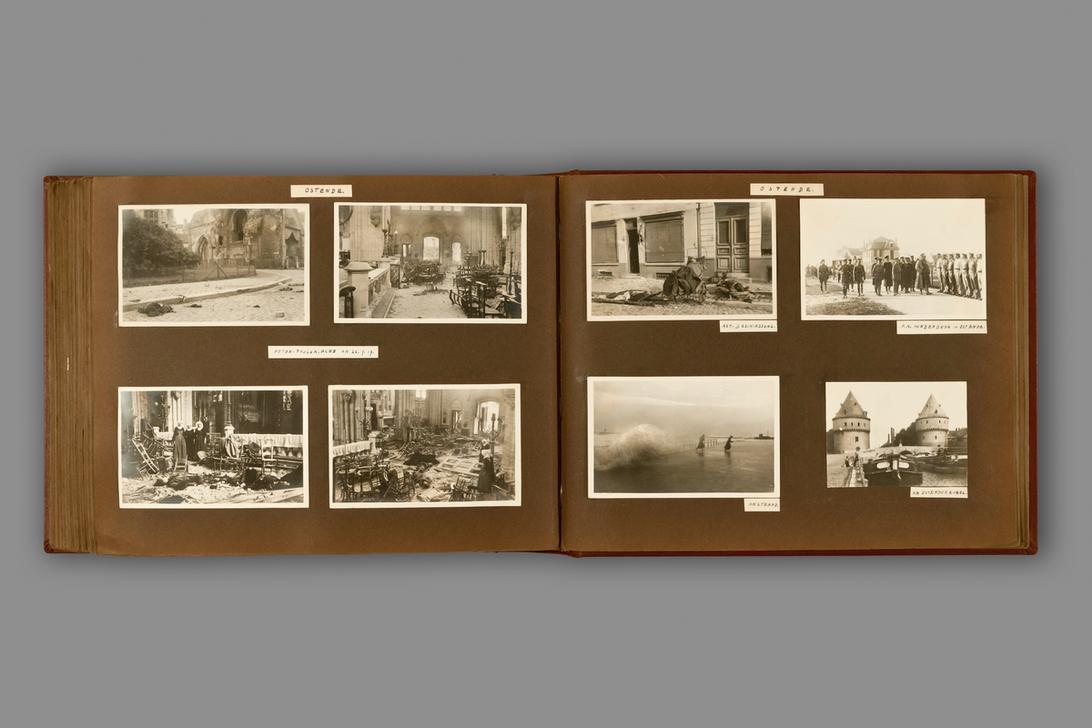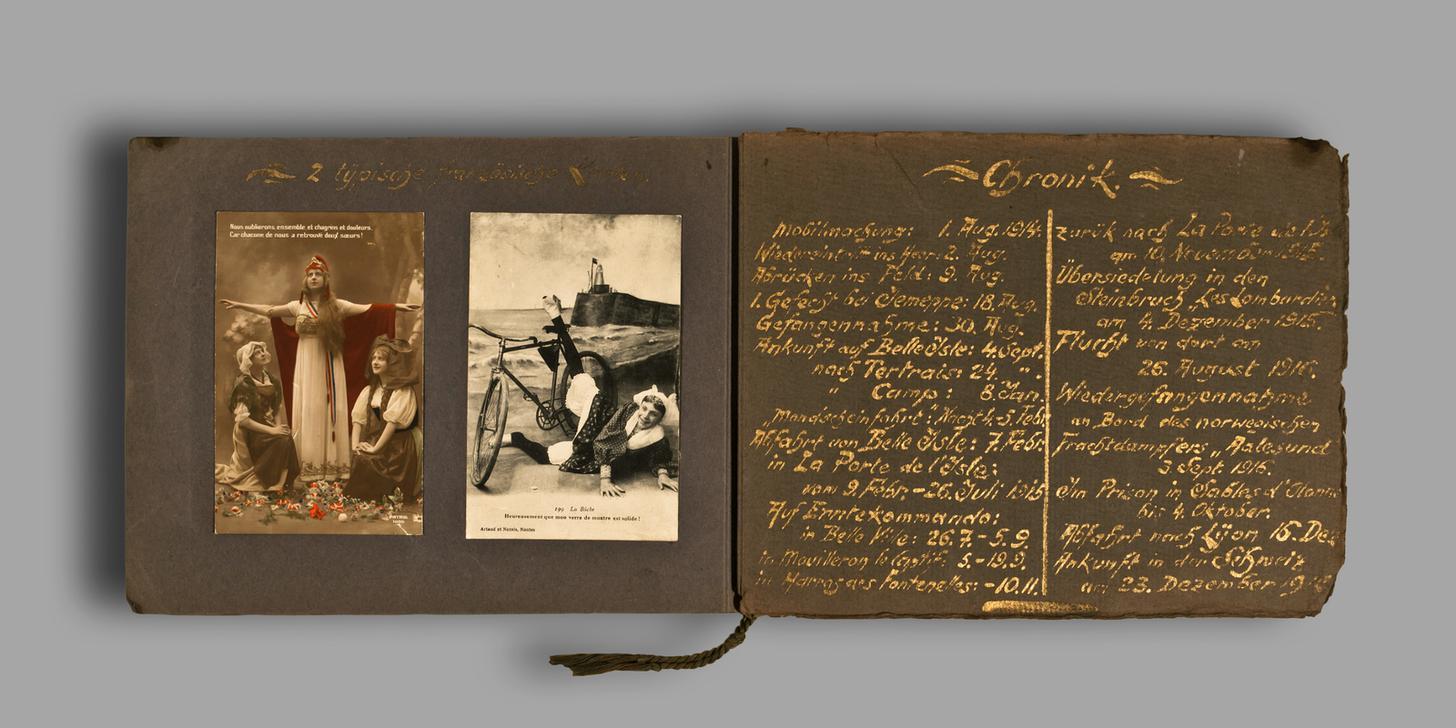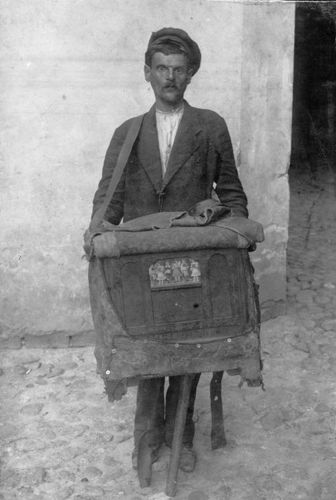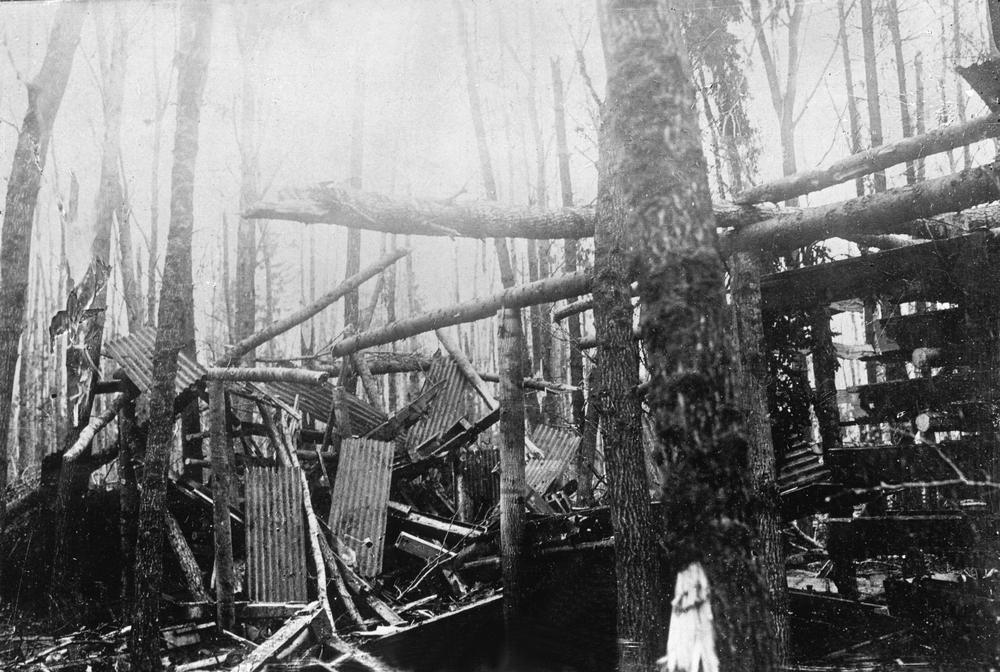A Personal View of the First World War: Photo Albums
28 June 2023

Among the great treasures of the akg-images archive are collections of historic photo albums, over 600 in total, including family albums, travel albums and company records covering the past 150 years, as well as personal German photo albums from the First World War. The photographs contained within offer an opportunity to view the events through the eyes of the witnesses.
The albums carry names like “Memories of War” or simply “Album”, others show the Iron Cross, the portrait of Hindenburg or the title “World War 1914/1915/1916”, with the years 1917 and 1918 added in by hand underneath - a reminder that everyone had expected a short war or a rapid victory.

100 years later, there are a plethora of images covering the First World War. Although photography, to the average person, was an emerging medium, the war coincided with its burgeoning development. Photography was a propaganda tool, documenting and releasing a controlled view of the war and offering civilians a sanitised version of events. Photography was also a way for soldiers to record their own experiences on the front.
In many personal photo albums, for example in the album of the lawyer and later publisher Dr Hanns Krach, we see images where mere seconds separate the living from the dead. Other albums are meant to be documentary - they give an official account of the action, for example the Rottländer album entitled “History of Reinforcement Battalion 161”, a battalion stationed in Lümschweiler (Alsace) in 1917. Frequently, the albums resemble collages with the amateur photography interspersed with postcards, sketches, comments on the images or reports and news articles. Many show the photographer's curiosity with his new environment, and his interest with other people and regions, almost like holiday snaps juxtaposed with photographs of the war and its all-destructive power.

(Germany), with handwritten notes. AKG1899215

One album by an unknown amateur photographer takes us to the Eastern Front, to Poland and Lithuania. This photographer shows his interest in the life and culture of the people in the country he is occupying. We see everyday Jewish life in “Vilna” (now Vilnius), in the streets and markets, and the interactions of the Jewish population and German soldiers. The photographer shows his cultural and historical interests with photographs of churches and synagogues - including the “Synagogue of Vilna” which was the largest in Lithuania and would, in later years, be destroyed by Nazis in the Second Word War.
In 1916 there were over 74,000 Jews in Vilnius, accounting for around 40% of the population. From 1939, of the 80,000 Jews in Vilnius, only a few thousand survived the Second World War.

In this album, there are also pictures of a wonderfully unspoilt landscape with captions like “Winter in Poland” and “Bison in a Russian forest”. They reveal an appreciation for the beauty of nature. At that time bison were only to be found in the East, in the rest of Europe they had long since been hunted to extinction.

There are photographs from a sporting event attended by Prince Oskar of Prussia (1888-1958) - “Turf Sports Festival of the Imperial Vilna Governorate on the Vilna Antokol Racetrack”, now a suburb of Vilnius. The images indicate an importance placed on organised physical exercise and sports during the First World War, offering the opportunity for the troops to prove their prowess.
On the next page we see the horror of war, with photographs of the Battle of Postawy, today in Belarus. These photos were taken after the collapse of the Russian spring offensive on the Northern Front. The offensive began on 18 March 1916 and over 140,000 Russian soldiers lost their lives. The images carry captions like, “View of the destroyed positions along the Hindeburg Line seen from the Russian side.” Along with the loss of Russian and German soldiers, the battle laid waste to the surrounding area, leaving it barren. These apocalyptic images were later depicted by Otto Dix in his paintings, for example in “The Trench”, a work deemed by the Nazis to be so detrimental to wartime morale that it was burned and only reproductions survive today. At the end of this personal photo album, we see Russian war prisoners, their fates uncertain.
At the end of 1916 the German Supreme Army Command, understanding the importance of images in warfare, created the “BUFA”, an office designed to control how images and film of the war were seen and used. The importance of photography in this respect had long been recognised, but it was difficult to suppress the use of amateur photography in the First World War as it was already flourishing in popularity.
Many of the personal photo albums now archived at akg-images reflect the soldiers' euphoria at the beginning of the First World War and their disillusionment as the war progressed. The photographs show the tremendous sacrifices demanded of the soldiers and the civilian population, and the technological advancements in warfare and weaponry which facilitated millions of deaths. At the end of the war, many veterans searched for a way back to an older military structure which, for the Weimar Republic, would have fatal consequences. Many of the surviving soldiers sorted through their photographs, labelled them carefully and collated them into albums as a document of their war experiences.



.jpg)
.jpg)




